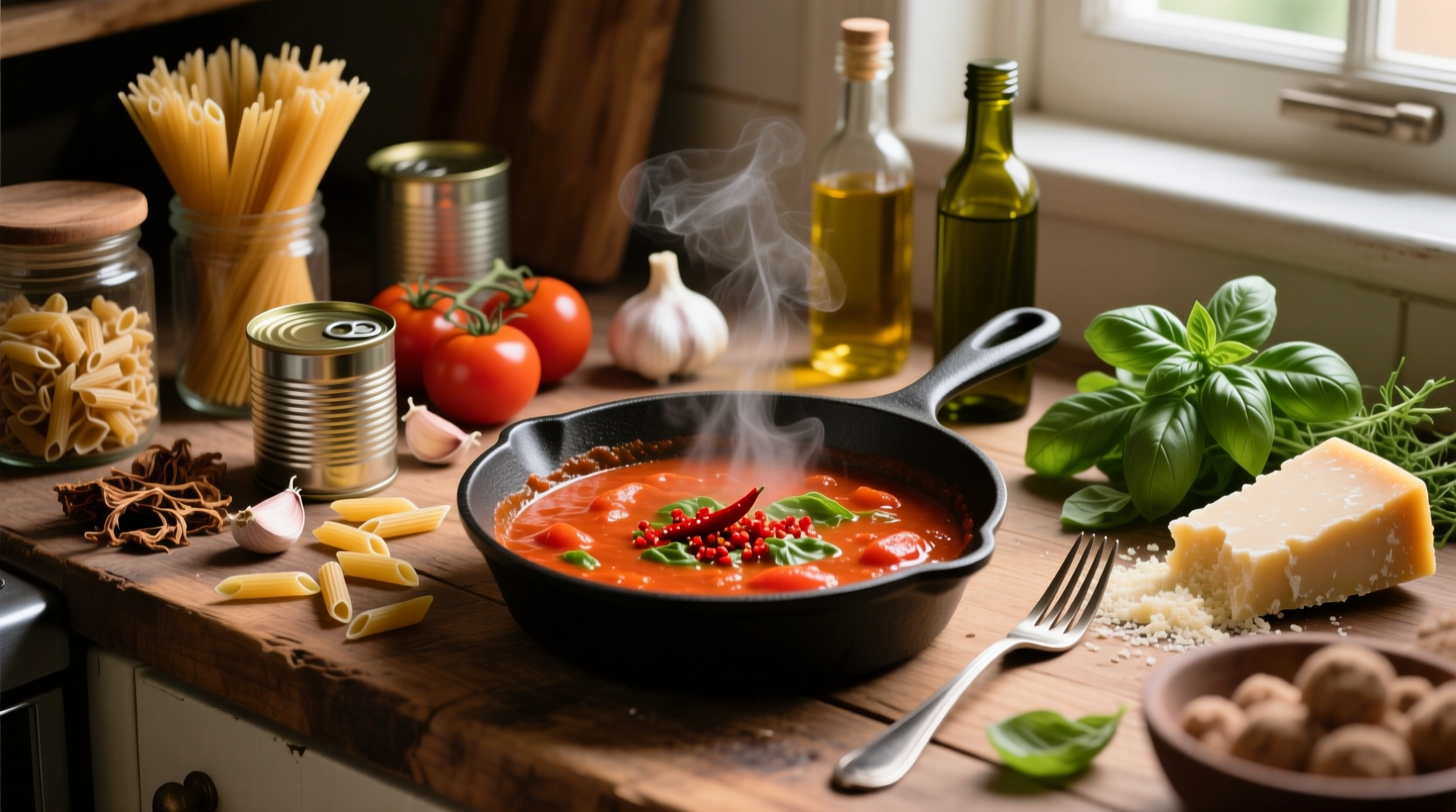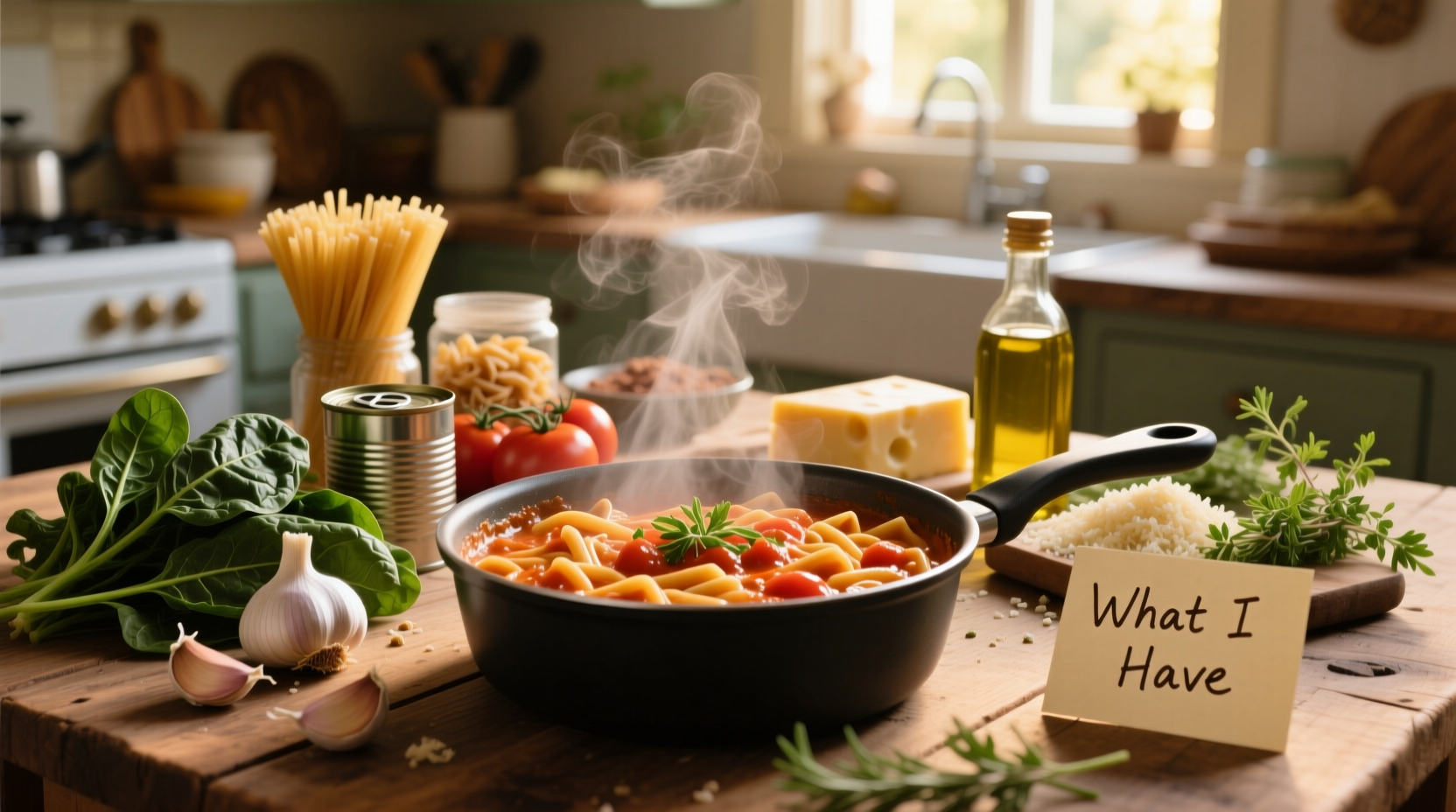Ever stare into your nearly empty fridge wondering what can I cook with what I have? You're not alone. According to a 2024 National Grocers Association survey, 68% of home cooks face this dilemma at least once a week. The good news: with smart ingredient combinations and basic cooking techniques, you can transform limited supplies into delicious meals.
Your Pantry Powerhouse System
Instead of searching for recipes based on what you should have, let's work with what's actually in your kitchen. This system helps you identify meal possibilities based on your existing ingredients.
What to Cook With Eggs + Pantry Staples
Eggs are the ultimate kitchen MVP. With just eggs and common pantry items, you can create:
- Fried rice - Use day-old rice, soy sauce, and frozen peas
- Shakshuka - Simmer canned tomatoes with spices, create wells for eggs
- Omelets - Add canned beans, leftover cooked vegetables, or cheese
Pro tip: Beat eggs with a tablespoon of water for fluffier results. This technique, recommended by the American Egg Board, creates steam during cooking for lighter texture.
What to Cook With Canned Beans
Canned beans are nutritional powerhouses that require zero cooking. Try these combinations:
- White bean soup - Sauté onions, garlic, add broth and cannellini beans
- Bean salad - Mix black beans, corn, diced tomatoes, lime juice
- Chili - Brown any ground meat (or use more beans), add tomatoes, spices
| Pantry Staple | Shelf Life | Best Pairings |
|---|---|---|
| Canned beans | 2-5 years | Rice, tomatoes, spices |
| Dry pasta | 1-2 years | Canned tomatoes, olive oil, garlic |
| Rice | 6 months-1 year | Beans, frozen vegetables, soy sauce |
| Canned tomatoes | 1-2 years | Beans, pasta, spices |
Source: USDA FoodKeeper App - official food storage guidelines
What to Cook With Pasta or Rice
When you're asking what can I cook with what I have and pasta or rice is your main ingredient:
- Pasta puttanesca - Olive oil, garlic, capers, anchovies (optional), canned tomatoes
- Rice pilaf - Sauté rice with onion, add broth or water, finish with lemon
- Pantry fried rice - Use any cooked rice, soy sauce, scrambled egg, frozen peas

What to Cook With Frozen Vegetables
Frozen vegetables maintain nutrients better than fresh in many cases. Create:
- Vegetable stir-fry - Frozen mixed vegetables, soy sauce, garlic, ginger
- Vegetable soup - Broth, frozen vegetables, canned beans, pasta
- Frittata - Sauté frozen vegetables, add beaten eggs, bake
Essential Flavor Boosters With Minimal Ingredients
You don't need specialty ingredients to create depth. The James Beard Foundation confirms these basic combinations work wonders:
- Garlic + olive oil + lemon juice - Perfect for pasta or vegetables
- Soy sauce + rice vinegar + honey - Instant stir-fry sauce
- Cumin + paprika + garlic powder - Base for bean dishes
What NOT to Do With Limited Ingredients
Based on culinary safety guidelines from the FDA, avoid these common mistakes:
- Don't use expired canned goods with bulging lids (potential botulism risk)
- Don't substitute baking soda for baking powder without proper conversion
- Don't use rancid oils - they create harmful compounds when heated
- Don't attempt to salvage moldy foods except hard cheeses and firm vegetables
Creating Complete Meals With 3-5 Ingredients
Professional chefs regularly create satisfying dishes with minimal components. Try these combinations:
- 3-ingredient tomato pasta - Pasta, canned tomatoes, garlic
- 4-ingredient bean tacos - Canned beans, tortillas, salsa, cheese
- 5-ingredient fried rice - Rice, eggs, frozen peas, soy sauce, sesame oil
Maximizing What You Have: Storage Tips
Extend your ingredients' life with these FDA-recommended practices:
- Store opened canned goods in glass containers, not the can
- Keep rice and pasta in airtight containers away from heat
- Freeze herbs in olive oil for future use
- Place paper towel in container with greens to absorb moisture











 浙公网安备
33010002000092号
浙公网安备
33010002000092号 浙B2-20120091-4
浙B2-20120091-4